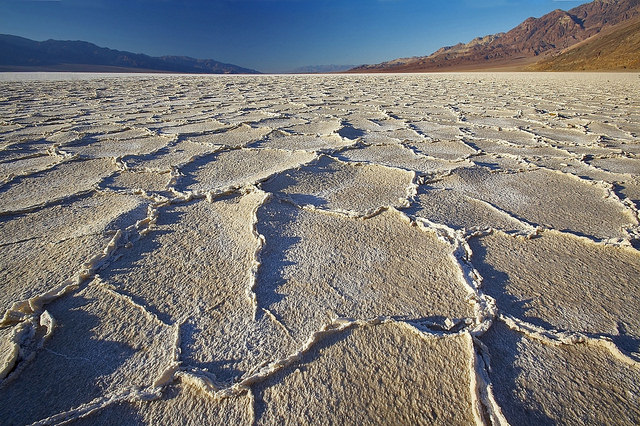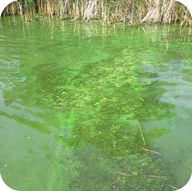6.20: Soil and Water
- Page ID
- 12154
\( \newcommand{\vecs}[1]{\overset { \scriptstyle \rightharpoonup} {\mathbf{#1}} } \)
\( \newcommand{\vecd}[1]{\overset{-\!-\!\rightharpoonup}{\vphantom{a}\smash {#1}}} \)
\( \newcommand{\dsum}{\displaystyle\sum\limits} \)
\( \newcommand{\dint}{\displaystyle\int\limits} \)
\( \newcommand{\dlim}{\displaystyle\lim\limits} \)
\( \newcommand{\id}{\mathrm{id}}\) \( \newcommand{\Span}{\mathrm{span}}\)
( \newcommand{\kernel}{\mathrm{null}\,}\) \( \newcommand{\range}{\mathrm{range}\,}\)
\( \newcommand{\RealPart}{\mathrm{Re}}\) \( \newcommand{\ImaginaryPart}{\mathrm{Im}}\)
\( \newcommand{\Argument}{\mathrm{Arg}}\) \( \newcommand{\norm}[1]{\| #1 \|}\)
\( \newcommand{\inner}[2]{\langle #1, #2 \rangle}\)
\( \newcommand{\Span}{\mathrm{span}}\)
\( \newcommand{\id}{\mathrm{id}}\)
\( \newcommand{\Span}{\mathrm{span}}\)
\( \newcommand{\kernel}{\mathrm{null}\,}\)
\( \newcommand{\range}{\mathrm{range}\,}\)
\( \newcommand{\RealPart}{\mathrm{Re}}\)
\( \newcommand{\ImaginaryPart}{\mathrm{Im}}\)
\( \newcommand{\Argument}{\mathrm{Arg}}\)
\( \newcommand{\norm}[1]{\| #1 \|}\)
\( \newcommand{\inner}[2]{\langle #1, #2 \rangle}\)
\( \newcommand{\Span}{\mathrm{span}}\) \( \newcommand{\AA}{\unicode[.8,0]{x212B}}\)
\( \newcommand{\vectorA}[1]{\vec{#1}} % arrow\)
\( \newcommand{\vectorAt}[1]{\vec{\text{#1}}} % arrow\)
\( \newcommand{\vectorB}[1]{\overset { \scriptstyle \rightharpoonup} {\mathbf{#1}} } \)
\( \newcommand{\vectorC}[1]{\textbf{#1}} \)
\( \newcommand{\vectorD}[1]{\overrightarrow{#1}} \)
\( \newcommand{\vectorDt}[1]{\overrightarrow{\text{#1}}} \)
\( \newcommand{\vectE}[1]{\overset{-\!-\!\rightharpoonup}{\vphantom{a}\smash{\mathbf {#1}}}} \)
\( \newcommand{\vecs}[1]{\overset { \scriptstyle \rightharpoonup} {\mathbf{#1}} } \)
\( \newcommand{\vecd}[1]{\overset{-\!-\!\rightharpoonup}{\vphantom{a}\smash {#1}}} \)
\(\newcommand{\avec}{\mathbf a}\) \(\newcommand{\bvec}{\mathbf b}\) \(\newcommand{\cvec}{\mathbf c}\) \(\newcommand{\dvec}{\mathbf d}\) \(\newcommand{\dtil}{\widetilde{\mathbf d}}\) \(\newcommand{\evec}{\mathbf e}\) \(\newcommand{\fvec}{\mathbf f}\) \(\newcommand{\nvec}{\mathbf n}\) \(\newcommand{\pvec}{\mathbf p}\) \(\newcommand{\qvec}{\mathbf q}\) \(\newcommand{\svec}{\mathbf s}\) \(\newcommand{\tvec}{\mathbf t}\) \(\newcommand{\uvec}{\mathbf u}\) \(\newcommand{\vvec}{\mathbf v}\) \(\newcommand{\wvec}{\mathbf w}\) \(\newcommand{\xvec}{\mathbf x}\) \(\newcommand{\yvec}{\mathbf y}\) \(\newcommand{\zvec}{\mathbf z}\) \(\newcommand{\rvec}{\mathbf r}\) \(\newcommand{\mvec}{\mathbf m}\) \(\newcommand{\zerovec}{\mathbf 0}\) \(\newcommand{\onevec}{\mathbf 1}\) \(\newcommand{\real}{\mathbb R}\) \(\newcommand{\twovec}[2]{\left[\begin{array}{r}#1 \\ #2 \end{array}\right]}\) \(\newcommand{\ctwovec}[2]{\left[\begin{array}{c}#1 \\ #2 \end{array}\right]}\) \(\newcommand{\threevec}[3]{\left[\begin{array}{r}#1 \\ #2 \\ #3 \end{array}\right]}\) \(\newcommand{\cthreevec}[3]{\left[\begin{array}{c}#1 \\ #2 \\ #3 \end{array}\right]}\) \(\newcommand{\fourvec}[4]{\left[\begin{array}{r}#1 \\ #2 \\ #3 \\ #4 \end{array}\right]}\) \(\newcommand{\cfourvec}[4]{\left[\begin{array}{c}#1 \\ #2 \\ #3 \\ #4 \end{array}\right]}\) \(\newcommand{\fivevec}[5]{\left[\begin{array}{r}#1 \\ #2 \\ #3 \\ #4 \\ #5 \\ \end{array}\right]}\) \(\newcommand{\cfivevec}[5]{\left[\begin{array}{c}#1 \\ #2 \\ #3 \\ #4 \\ #5 \\ \end{array}\right]}\) \(\newcommand{\mattwo}[4]{\left[\begin{array}{rr}#1 \amp #2 \\ #3 \amp #4 \\ \end{array}\right]}\) \(\newcommand{\laspan}[1]{\text{Span}\{#1\}}\) \(\newcommand{\bcal}{\cal B}\) \(\newcommand{\ccal}{\cal C}\) \(\newcommand{\scal}{\cal S}\) \(\newcommand{\wcal}{\cal W}\) \(\newcommand{\ecal}{\cal E}\) \(\newcommand{\coords}[2]{\left\{#1\right\}_{#2}}\) \(\newcommand{\gray}[1]{\color{gray}{#1}}\) \(\newcommand{\lgray}[1]{\color{lightgray}{#1}}\) \(\newcommand{\rank}{\operatorname{rank}}\) \(\newcommand{\row}{\text{Row}}\) \(\newcommand{\col}{\text{Col}}\) \(\renewcommand{\row}{\text{Row}}\) \(\newcommand{\nul}{\text{Nul}}\) \(\newcommand{\var}{\text{Var}}\) \(\newcommand{\corr}{\text{corr}}\) \(\newcommand{\len}[1]{\left|#1\right|}\) \(\newcommand{\bbar}{\overline{\bvec}}\) \(\newcommand{\bhat}{\widehat{\bvec}}\) \(\newcommand{\bperp}{\bvec^\perp}\) \(\newcommand{\xhat}{\widehat{\xvec}}\) \(\newcommand{\vhat}{\widehat{\vvec}}\) \(\newcommand{\uhat}{\widehat{\uvec}}\) \(\newcommand{\what}{\widehat{\wvec}}\) \(\newcommand{\Sighat}{\widehat{\Sigma}}\) \(\newcommand{\lt}{<}\) \(\newcommand{\gt}{>}\) \(\newcommand{\amp}{&}\) \(\definecolor{fillinmathshade}{gray}{0.9}\)
Could this land be used for agriculture?
Probably not. The quality of soil is very important in determining what can grow in a particular area. Good soil is not so easy to come by. Soil should be considered another resource that we, as a population, must strive to protect.
Soil and Water Resources
Theoretically, soil and water are renewable resources. However, they may be ruined by careless human actions.
Soil
Soil is a mixture of eroded rock, minerals, partly decomposed organic matter, and other materials. It is essential for plant growth, so it is the foundation of terrestrial ecosystems. Soil is important for other reasons as well. For example, it removes toxins from water and breaks down wastes.
Although renewable, soil takes a very long time to form—up to hundreds of millions of years. So, for human purposes, soil is a nonrenewable resource. It is also constantly depleted of nutrients through careless use, and eroded by wind and water. For example, misuse of soil caused a huge amount of it to simply blow away in the 1930s during the Dust Bowl (see Figure below). Soil must be used wisely to preserve it for the future. Conservation practices include contour plowing and terracing. Both reduce soil erosion. Soil also must be protected from toxic wastes.
 The Dust Bowl occurred between 1933 and 1939 in Oklahoma and other southwestern U.S. states. Plowing had exposed prairie soil. Drought turned the soil to dust. Intense dust storms blew away vast quantities of the soil. Much of the soil blew all the way to the Atlantic Ocean.
The Dust Bowl occurred between 1933 and 1939 in Oklahoma and other southwestern U.S. states. Plowing had exposed prairie soil. Drought turned the soil to dust. Intense dust storms blew away vast quantities of the soil. Much of the soil blew all the way to the Atlantic Ocean.Water
Water is essential for all life on Earth. For human use, water must be fresh. Of all the water on Earth, only 1 percent is fresh, liquid water. Most of the rest is either salt water in the ocean or ice in glaciers and ice caps.
Although water is constantly recycled through the water cycle, it is in danger. Over-use and pollution of freshwater threaten the limited supply that people depend on. Already, more than 1 billion people worldwide do not have adequate freshwater. With the rapidly growing human population, the water shortage is likely to get worse.
Too Much of a Good Thing
Water pollution comes from many sources. One of the biggest sources is runoff. Runoff picks up chemicals such as fertilizer from agricultural fields, lawns, and golf courses. It carries the chemicals to bodies of water. The added nutrients from fertilizer often cause excessive growth of algae, creating algal blooms (see Figure below). The algae use up oxygen in the water so that other aquatic organisms cannot survive. This has occurred over large areas of the ocean, creating dead zones, where low oxygen levels have killed all ocean life. A very large dead zone exists in the Gulf of Mexico. Measures that can help prevent these problems include cutting down on fertilizer use. Preserving wetlands also helps because wetlands filter runoff water.
 Algal Bloom. Nutrients from fertilizer in runoff caused this algal bloom.
Algal Bloom. Nutrients from fertilizer in runoff caused this algal bloom.Summary
- Soil and water are renewable resources but may be ruined by careless human actions. Soil can be depleted of nutrients. It can also be eroded by wind or water.
- Over-use and pollution of freshwater threaten the limited supply that people depend on.
Review
- What is soil?
- Why is soil considered a nonrenewable resource?
- How much water is drinkable?
- Why would you expect a dead zone to start near the mouth of a river, where the river flows into a body of water?
| Image | Reference | Attributions |
 |
[Figure 1] | Credit: Dr. Jennifer L. Graham/U.S. Geological Survey Source: gallery.usgs.gov/photos/06_30_2010_hLc5FSq11Y_06_30_2010_11#.T767jMV62Sp License: Public Domain |
 |
[Figure 2] | Credit: Left: National Oceanic and Atmospheric Administration; Right: U.S. Department of Agriculture Source: Left: commons.wikimedia.org/wiki/File:Dust_Storm_Texas_1935.jpg ; Right: commons.wikimedia.org/wiki/File:Dust_Bowl_-_Dallas ; _South_Dakota_1936.jpg License: Public Domain |
 |
[Figure 3] | Credit: Dr. Jennifer L. Graham/U.S. Geological Survey Source: gallery.usgs.gov/photos/06_30_2010_hLc5FSq11Y_06_30_2010_11#.T767jMV62Sp License: Public Domain |

